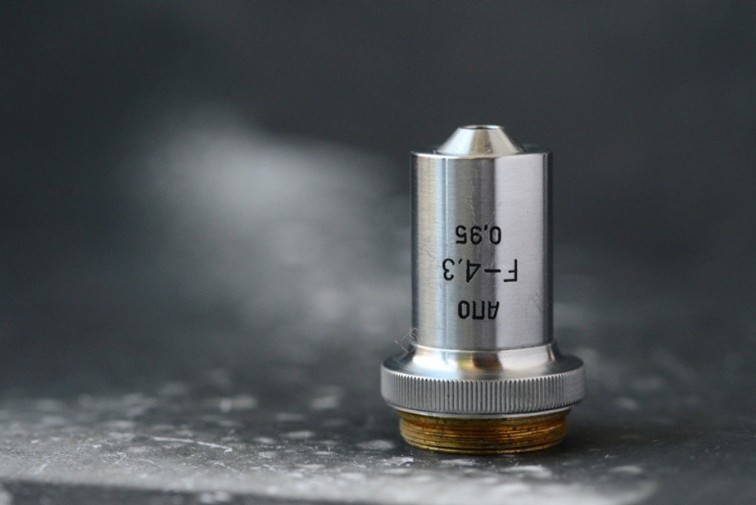www.fluorescencemicroscopy.it
Main menu:
- Home Page
- Microscopes
- Fluorescence
- Description
- Diascopy
- Epi-Fluoresc.
- Illumination
- Installing and Aligning a Mercury Lamp
- Fluorocromes
- Tables of Fluorocromes
- The Fading
- Wavelengths
- Properties
- % of transmission
- Types of filters
- Overlapping Spectra
- Intensity
- Image acquisition
- The Filter's set
- The Filters
- Fluorochrome's praparation
- Sample's preparations
- Fluorescence Sample
- Cytochemical Fluorescence
- Intrinsic Fluorescence
- Gallery
- Phase Contrast
- Polarization
- Darkfield
- DIC
- COL
- Rheinberg
- Brightfield
Objective Focal Length
Microscopes > AXIOPHOT
In the nineteenth century it was decided that 10 inches (250 mm) was a suitable close viewing distance for most people to see the finest detail of which the eye is capable, and that magnifications could then be calculated if it was assumed that the image seen in the eyepiece of a microscope was actually located in space at a plane ten inches from the eyes of the operator. At that distance (or any distance short of infinity) all features of the image would have calculable dimensions, and would therefore be comparable to other images measured in the same plane.The actual magnification is determined by using a object of known size, and then measuring the size of its image when projected 250mm from the exit pupil of the instrument -- in the case of the microscope, 250mm from the Ramsden disc of the eyepiece. Conversely, the size of any feature of the object can be determined by measuring the size of that feature's image, and dividing by the magnification.This standard is still in use today in that the magnifying power of simple lenses and lens systems is determined by dividing their focal length into 250 mm. For example, a hand magnifier with a focal length of 25 mm is a ten-power magnifier. For many years in the 1800s, English microscope manufacturers produced, in observance of this standard, microscopes having a tube length (between objective and eyepiece) of ten inches (250mm), but these proved unwieldy in use. Until the quite recent development of infinity-corrected objectives and for most of the twentieth century, the accepted standard for microscope objectives was an optical tube length of 160 mm. In other words, a microscope objective produced an image of the stated magnification only when it projected its image a distance of 160 mm measured from its back focal plane. This was also the conjugate distance required for spherical correction of the magnified image -- a topic dealt with in more detail in the advanced tutorial.
According to these criteria, a microscope objective having a focal length of 16mm is a ten-power objective (160 divided by 16), a forty-power objective has a focal length of 4mm.
Magniications of objective lenses is given by following calculation:

Example :

M = 165 / 4.3 = 38,37 (magnification of objective in a ZEISS infinity system microscope).